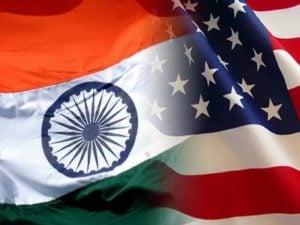
Like after a good first date, expectations can get a little out of hand when it comes burgeoning alliances between states. In the late 90’s relations between the US and India began to thaw (agreed to date), through the 2000s, as the two sides’ interests began to mold so did their relationship (going steady), and finally in 2008, the nuclear partnership deal seemed to cement the emerging alliance (marriage). Though this partnership is still in its early stages, there are some smart folks wondering if the alliance might be in trouble or actually overrated from the beginning.
For those who thought India-US was going to be another Special Relationship this may be accurate. India and US have much in common and the geopolitics of the 21st century appears to be putting them on the side of the key international shift of our time, China’s rise. However, this does not make the US and India best friends. They each have diverging interests (Iran, Pakistan), unique cultures, and domestic politics that will likely keep the two from ever crossing the threshold. That being said, I disagree with those seeing a serious drift in the young alliance. After all, look how far the two sides have come in 20 years. Daniel Twining provides some much needed historical context:
Recall the context in which U.S. and Indian officials, nearly 15 years ago, sought to forge a new relationship. For half a century, the American and Indian governments were alienated by India’s refusal to sign on as one of Washington’s Cold War allies; by the U.S. military alliance with Indian rival Pakistan, forged in 1954; and later by America’s tacit alliance with Indian rival China, countered by India’s tacit alliance with Moscow. Following wars with both Pakistan and China, India launched a covert nuclear weapons program, leading the United States to muster its allies to impose sweeping sanctions on technology trade with India — further stifling its development after state socialism had already undercut India’s growth potential. Even after the Cold War, Washington and New Delhi spent the 1990s feuding over proliferation, culminating in the imposition of even more U.S. sanctions following India’s 1998 nuclear weapons test.
Those who know their Cold War history know that India was no friend to the US. From India’s perspective, the US for decades had put their support toward their greatest rival Pakistan. The positive steps taken by the US and India in the past decade or so need to be given space to breath. China is not going anywhere and neither are the strong democratic elements that bring New Delhi and Washington together. I’m confident that this alliance is still on the upswing, it just needs patience and consistent efforts from both sides to embolden the ties and interests that bind them. The US and India are in the early stages of going steady, and that’s not a bad place right now. As the not so distant past shows, it has been a lot worse.